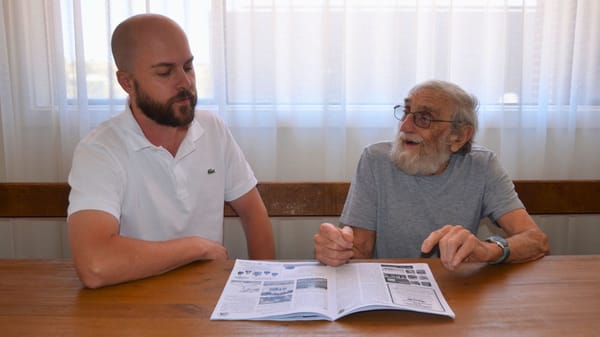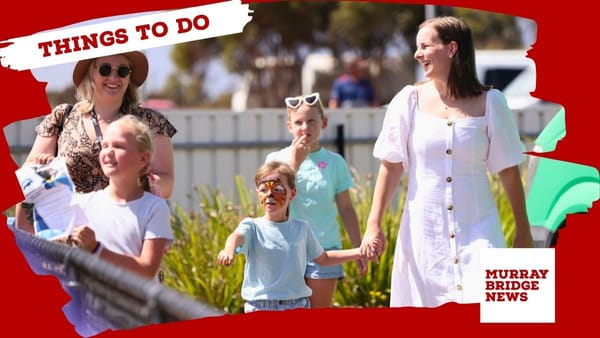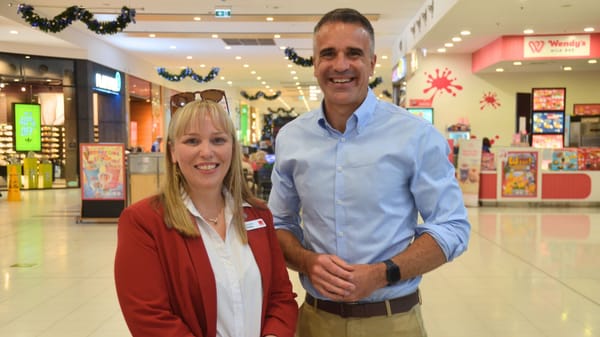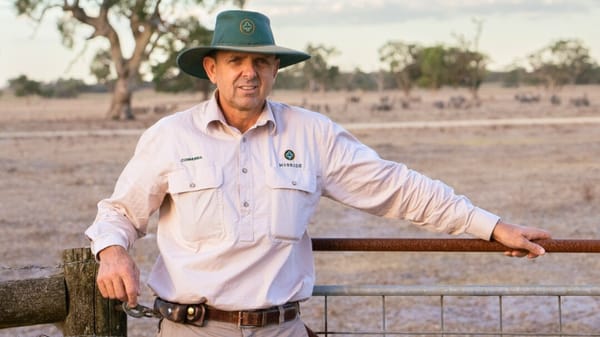Keeping kangaroos out proves key to conservation at Frahns Farm
Volunteers from not-for-profit organisation Bio-R are changing their methods as they aim to regrow a native woodland at Monarto.

This story was originally published behind Murray Bridge News’ paywall. Paywalled stories are unlocked four weeks after publication. Can’t wait that long? Subscribe here.

When you’re trying to turn old farmland into a new conservation park, it’s not just the livestock you need to ship out – it’s the hungry kangaroos, too.
That’s one of the lessons being learnt at Frahns Farm, at Monarto, where volunteers from not-for-profit organisation Bio-R have been planting seedlings that will someday grow into a natural woodland.
In the long term, ecologist David Paton AM hoped the patch of Crown land – left over from the Monarto purchases of the 1970s – could be declared a new park, Mearnsii Conservation Park, after a wattle species.
But three problems had needed solving first: kangaroos, weeds and water.
A fence, funded by the federal government, now kept the kangaroos out of a 135-hectare area.
Windrows ploughed into the open paddocks helped the seedlings take root while allowing some weed seeds to be blown away with the topsoil.
Water could still be an issue, he said, but this year had been better than last.
By changing their methods, Mr Paton said, Bio-R’s volunteers had been able to increase the survival rate of their seedlings from less than 20 per cent to more than 95%.
“The only way we’ve been able to really get efficient revegetation happening, putting back habitat for wildlife, is to exclude the kangaroos using a fence,” he said.
“Essentially this is like a safe haven for those plants.
“Eventually the idea will be these fences will potentially be taken down, kangaroos can come back in and be managed, but we'll then have back the habitat which can support our wildlife.”
In the meantime, bird species such as the diamond firetail were already being attracted back to areas such as Frahns Farm, Bio-R’s Tom Hunt said.
“It gives us hope that we can actually reconstruct these habitats at a scale that will benefit our declining bird species,” he said.

Government promises $6.8 million for ‘safe havens’
Federal Environment Minister Sussan Ley and MP Tony Pasin visited the site on Monday to hear about the progress that had been made there, thanks in part to taxpayer funding.
Ms Ley said the government would spend almost $6.8 million establishing a series of similar safe havens for native species over the next three years, with grants of between $500,000 and $1.8 million available to eligible organisations.
The project at Frahns Farm was a fine example of what could be achieved when native species – plant or animal – were protected from being eaten, she said.
Aside from government grants, Bio-R’s funding comes largely from public donations.
Donors are encouraged to consider offsetting their ecological footprint – the resources they use in day-to-day life – by enabling the restoration of a comparable area of natural habitat for $1 per day.
Volunteers will next have an opportunity to get involved at Frahns Farm on a pit trapping day to be held on Sunday.
- RSVP: www.eventbrite.com.au.
- Donate: bior.org.au.





